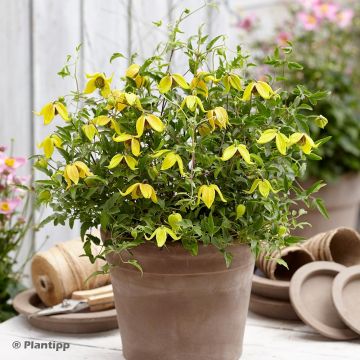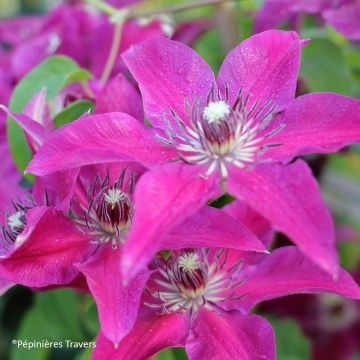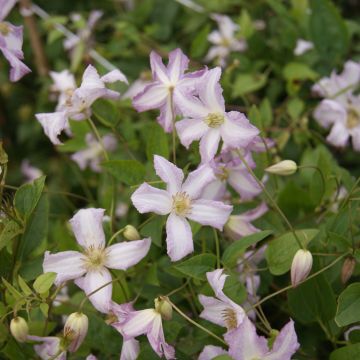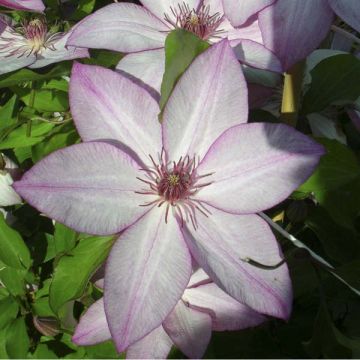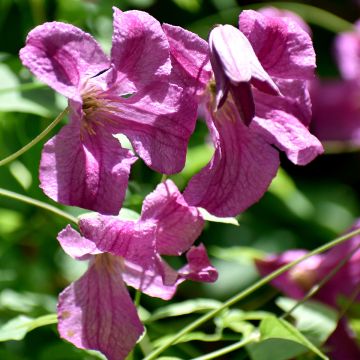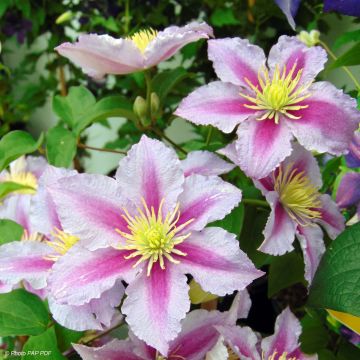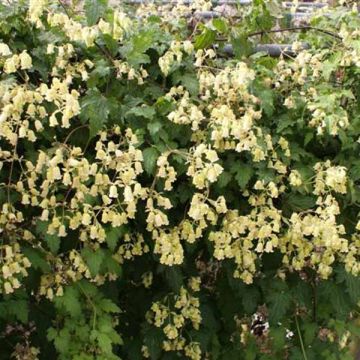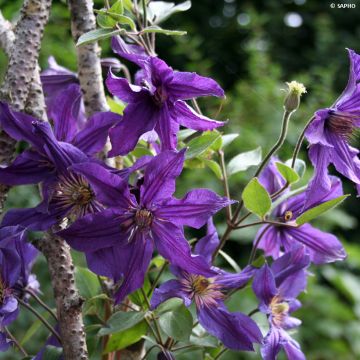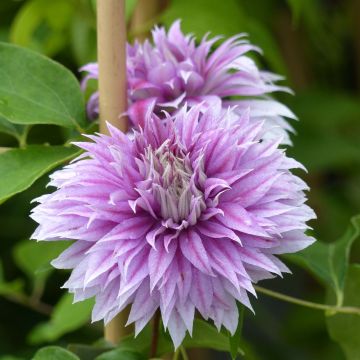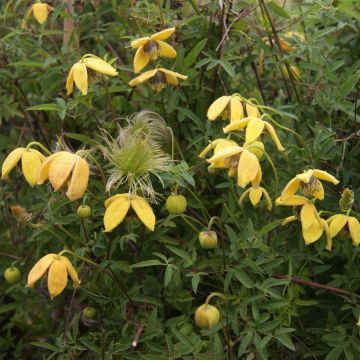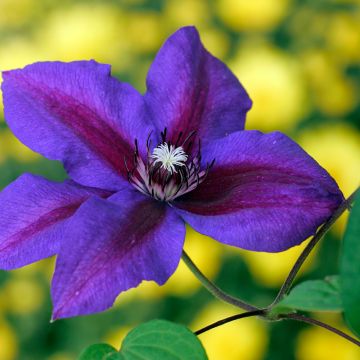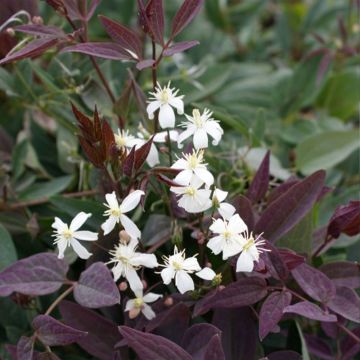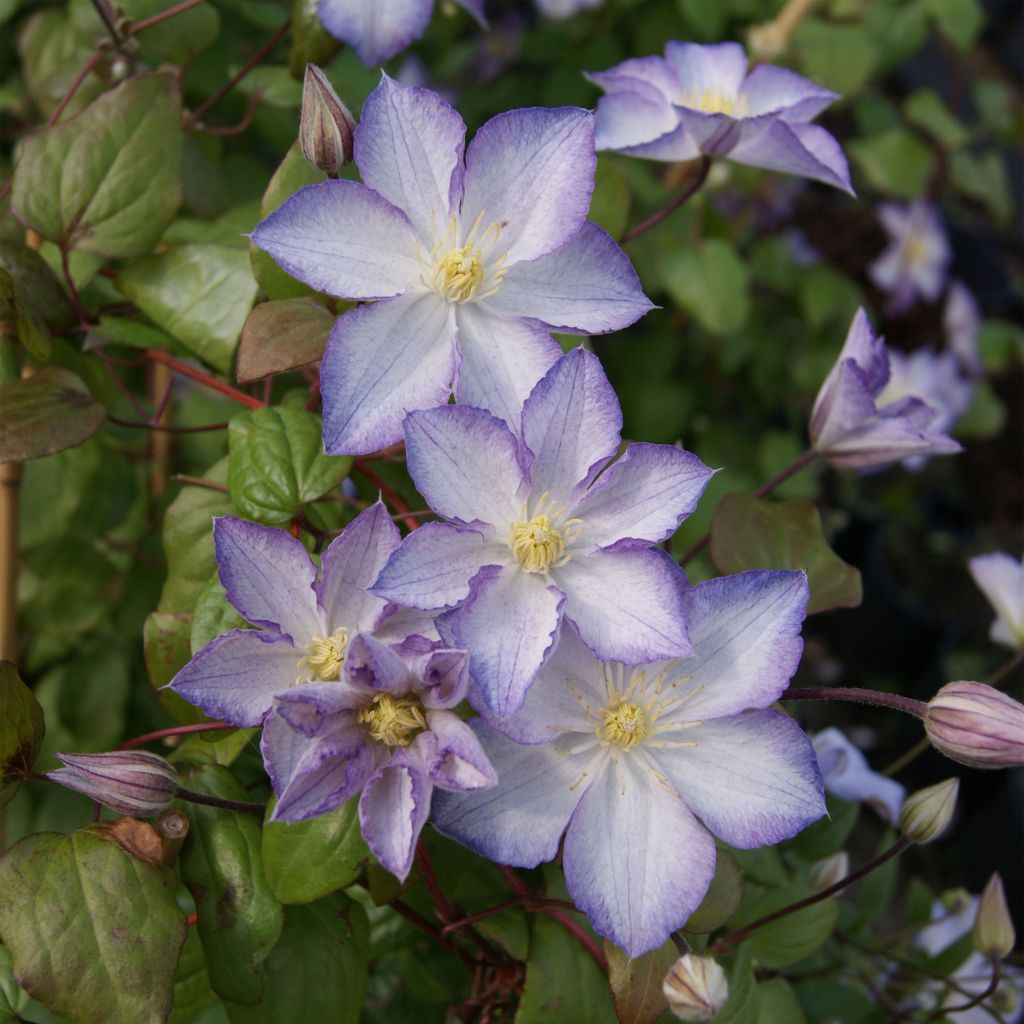

Clematis Lucky Charm - Clématite à grandes fleurs
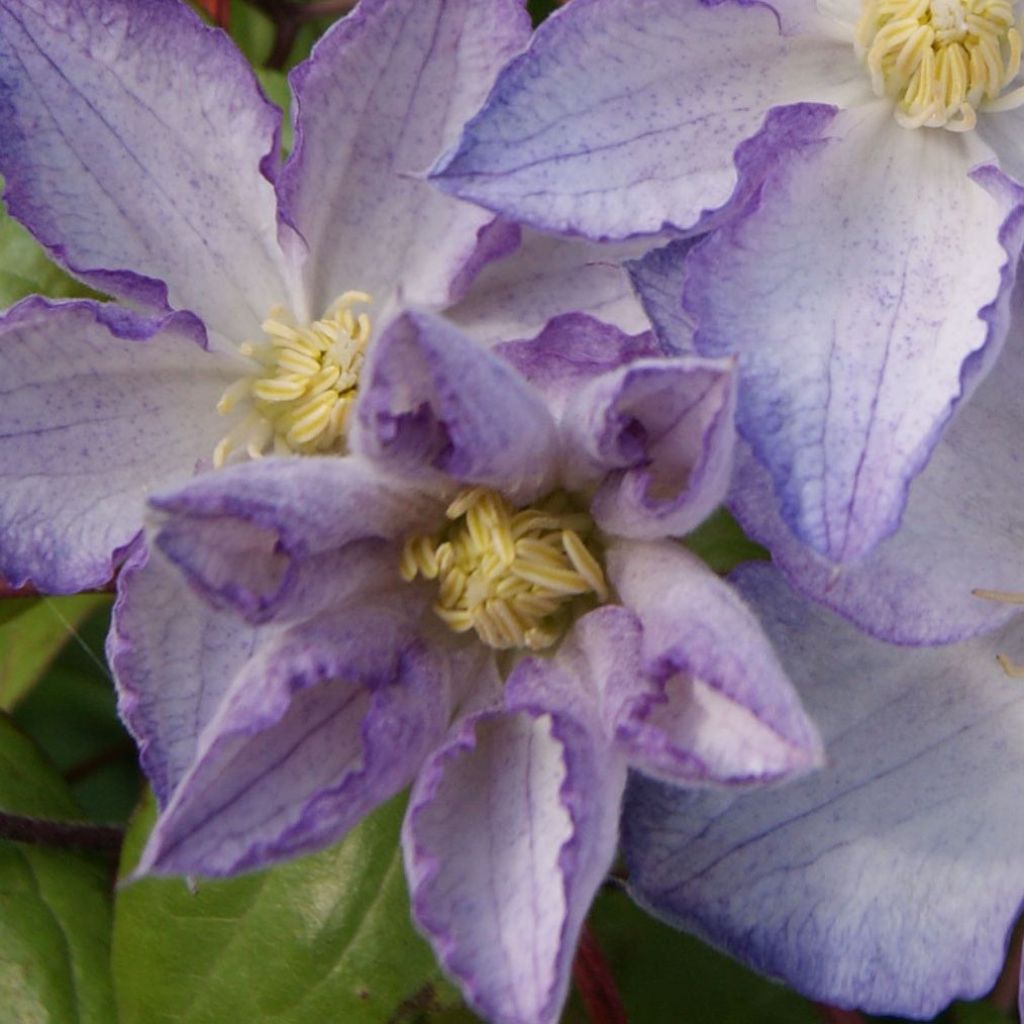

Clematis Lucky Charm - Clématite à grandes fleurs
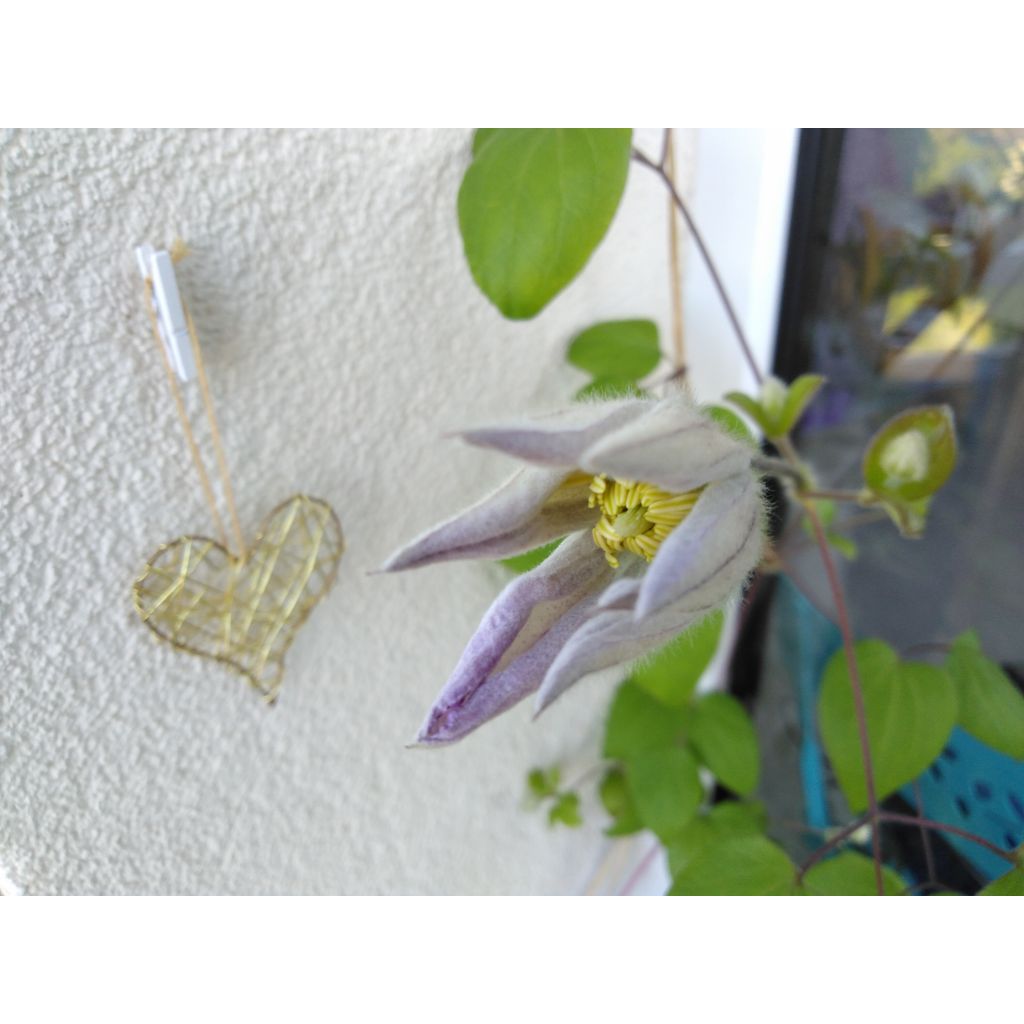

Clematis Lucky Charm
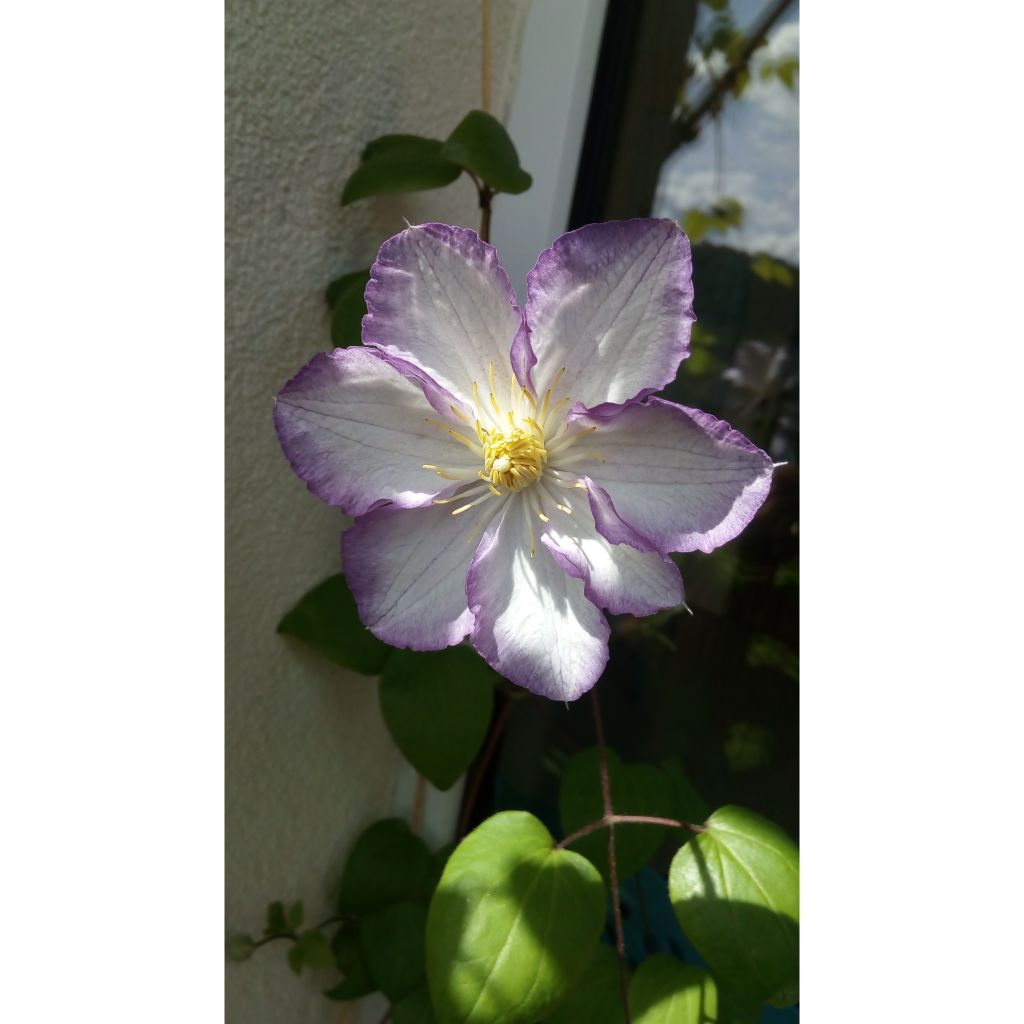

Clematis Lucky Charm
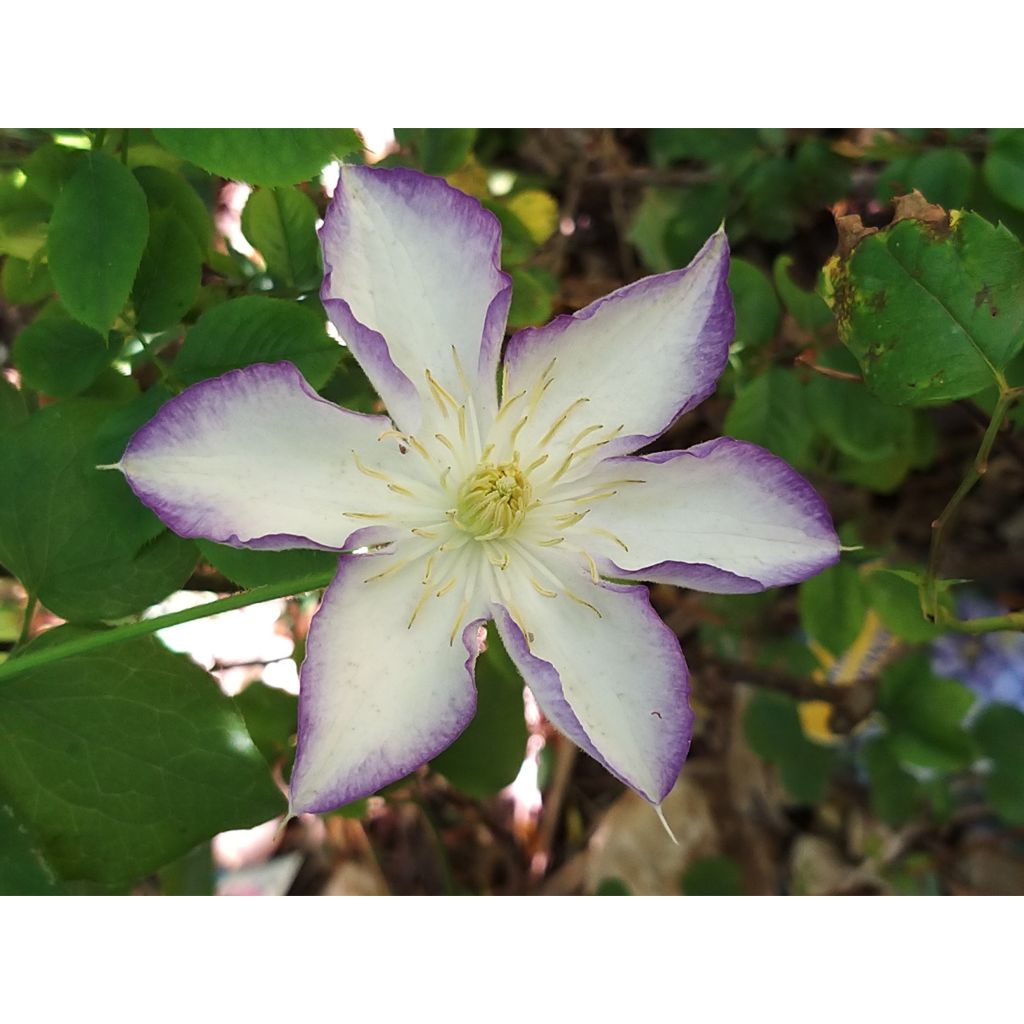

Clematis Lucky Charm
Clematis Lucky Charm
Clematis jackmanii Lucky Charm
Clematis
The clematis was impossible to get out of its pot, the roots detached from the soil and almost bare, a tiny branch and it doesn't shoot at all. Very disappointed this time.
Catherine, 02/06/2024
This item cannot be shipped to the selected country
Delivery charge from €5.90
More information
Schedule delivery date,
and select date in basket
This plant carries a 6 months recovery warranty
More information
We guarantee the quality of our plants for a full growing cycle, and will replace at our expense any plant that fails to recover under normal climatic and planting conditions.
From €5.90 for pickup delivery and €6.90 for home delivery
Express home delivery from €8.90.
Does this plant fit my garden?
Set up your Plantfit profile →
Description
Clematis 'Lucky Charm' is a recent and charming variety. It is adorned throughout the summer with large star-shaped flowers which are almost bicoloured, in white with a translucent mauve and violet border, a very unusual colour combination for clematis. The centre is adorned with yellow anthers. It is a floriferous and vigorous plant, as easy to grow and use as 'Jackmanii' from which it is derived. It climbs everywhere and adapts well to pot cultivation.
Clematis belong to the renunculaceae family. They are found in both hemispheres, especially in Europe, the Himalayas, China, Australia, North and Central America. 'Lucky Charm' is a perennial, semi-woody, climbing plant, which will reach a height of 3m (10ft), with a minimum spread of 1m (3ft).
This clematis bears large star-shaped flowers, 6 to 8cm (2 to 3in) in diameter which appear on the current year's shoots from June to the end of summer, in successive waves. The flowers are solitary or grouped in clusters. They are upright, which is rare in this group of Jackmanii hybrids, and have 4 petals with a white centre and mauve violet edges and speckles. The centre of the flower is adorned with a yellow stamen heart. Flowering is followed by decorative feathery silver-grey seed heads that persist until winter. The young, smooth leaves are simple and entire, initially a beautiful bronze, turning shiny dark green at maturity. This clematis clings to the support or host plant with tendrils.
Plant your clematis alongside climbing roses to extend the flowering of your walls and pergolas until the end of summer. It is a genus rich in diversity, with colours, shapes, and sizes of all kinds. Take advantage of their ease of cultivation to give your garden a romantic and bohemian touch.
Report an error about the product description
Clematis Lucky Charm in pictures
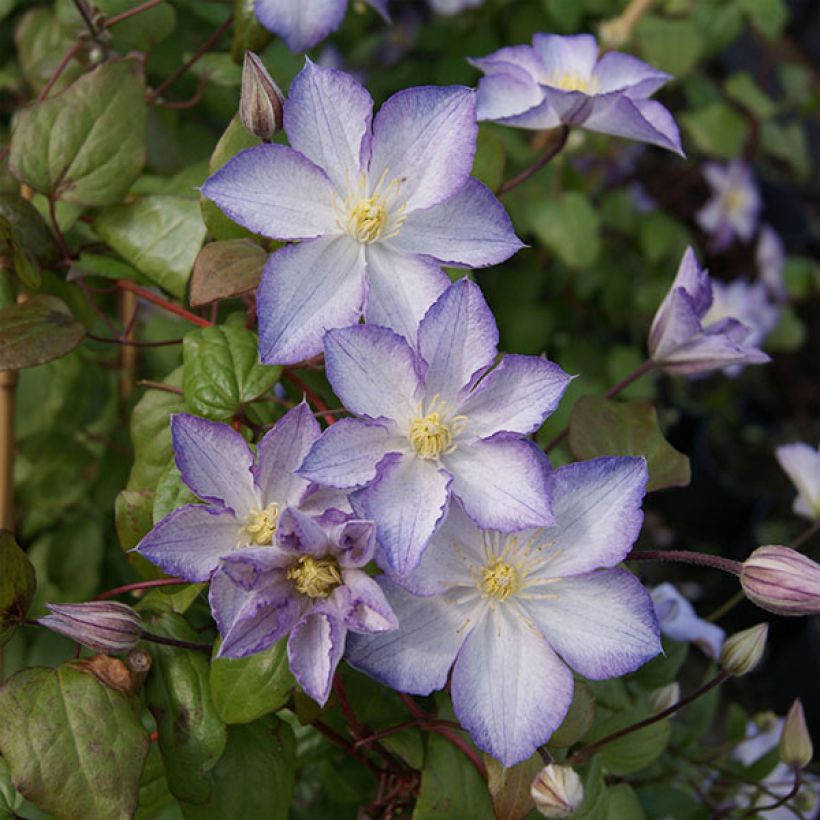

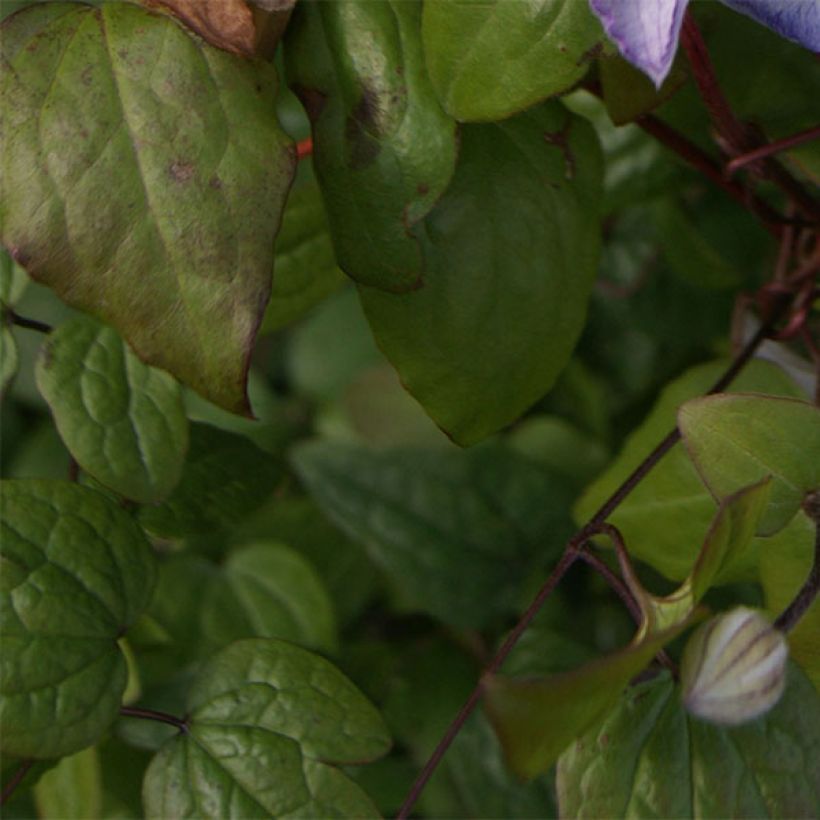

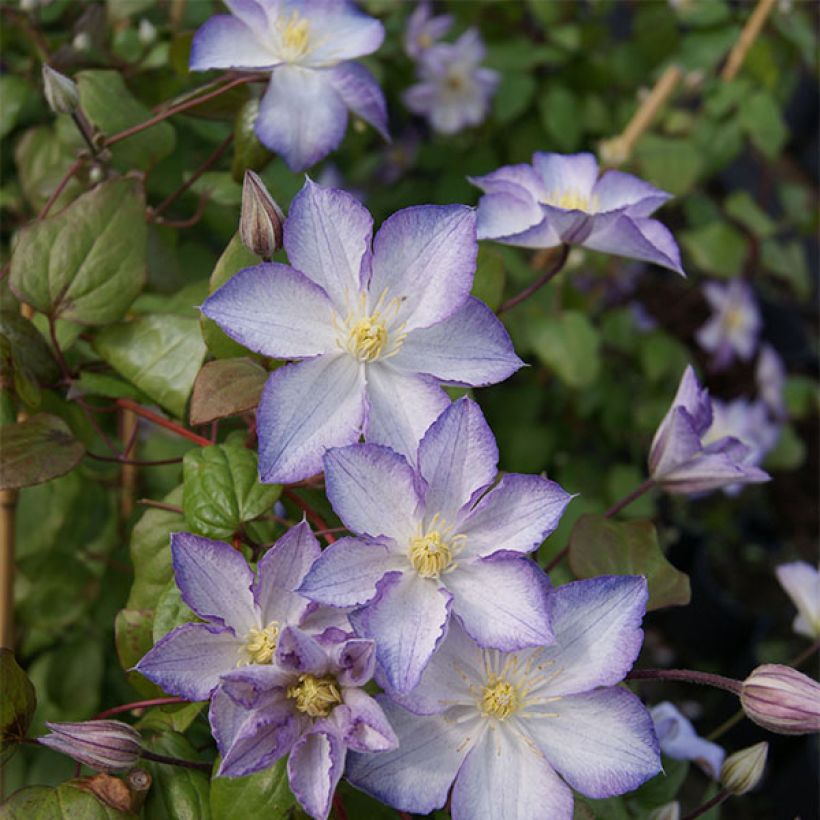

Plant habit
Flowering
Foliage
Botanical data
Clematis
jackmanii
Lucky Charm
Ranunculaceae
Clematis
Cultivar or hybrid
Other Clematis A to Z
Planting and care
Clematis Lucky Charm likes a sunny or lightly shaded position near a tree. Plant it in a fertile, humus-rich, well-drained soil, shading the roots and the base of the stem (with a flat tile, for example). Clematis wilts in overly wet soil. Plant it with the root ball 3 cm (1in) below the surface, in soil worked to a depth of 20 cm (8in), lightened with good compost and coarse sand. After planting, prune the clematis stems to about 30 cm (12in) above a healthy pair of buds. In the first few weeks, water regularly. However, be careful not to let the water stagnate as this can cause fungus to develop at the base of the stem. Mulch all clematis plants in February with garden compost or well-rotted manure, avoiding direct contact with the stems. Train the stems, without crushing them, until the plant can grip on its own. Clematis also likes to grow freely on neighbouring plants. Prune in March to 25 cm (10in) from the ground.
After a few years, cover the base of your climbing clematis with a small mound of soil to reduce the risk of wilting, while promoting the growth of vigorous new shoots from the crown. Voles can attack clematis and devour the stems. Aphids and greenhouse whiteflies are also potential pests.
Planting period
Intended location
Care
-
, onOrder confirmed
Reply from on Promesse de fleurs
Clematis
Haven't found what you were looking for?
Hardiness is the lowest winter temperature a plant can endure without suffering serious damage or even dying. However, hardiness is affected by location (a sheltered area, such as a patio), protection (winter cover) and soil type (hardiness is improved by well-drained soil).

Photo Sharing Terms & Conditions
In order to encourage gardeners to interact and share their experiences, Promesse de fleurs offers various media enabling content to be uploaded onto its Site - in particular via the ‘Photo sharing’ module.
The User agrees to refrain from:
- Posting any content that is illegal, prejudicial, insulting, racist, inciteful to hatred, revisionist, contrary to public decency, that infringes on privacy or on the privacy rights of third parties, in particular the publicity rights of persons and goods, intellectual property rights, or the right to privacy.
- Submitting content on behalf of a third party;
- Impersonate the identity of a third party and/or publish any personal information about a third party;
In general, the User undertakes to refrain from any unethical behaviour.
All Content (in particular text, comments, files, images, photos, videos, creative works, etc.), which may be subject to property or intellectual property rights, image or other private rights, shall remain the property of the User, subject to the limited rights granted by the terms of the licence granted by Promesse de fleurs as stated below. Users are at liberty to publish or not to publish such Content on the Site, notably via the ‘Photo Sharing’ facility, and accept that this Content shall be made public and freely accessible, notably on the Internet.
Users further acknowledge, undertake to have ,and guarantee that they hold all necessary rights and permissions to publish such material on the Site, in particular with regard to the legislation in force pertaining to any privacy, property, intellectual property, image, or contractual rights, or rights of any other nature. By publishing such Content on the Site, Users acknowledge accepting full liability as publishers of the Content within the meaning of the law, and grant Promesse de fleurs, free of charge, an inclusive, worldwide licence for the said Content for the entire duration of its publication, including all reproduction, representation, up/downloading, displaying, performing, transmission, and storage rights.
Users also grant permission for their name to be linked to the Content and accept that this link may not always be made available.
By engaging in posting material, Users consent to their Content becoming automatically accessible on the Internet, in particular on other sites and/or blogs and/or web pages of the Promesse de fleurs site, including in particular social pages and the Promesse de fleurs catalogue.
Users may secure the removal of entrusted content free of charge by issuing a simple request via our contact form.
The flowering period indicated on our website applies to countries and regions located in USDA zone 8 (France, the United Kingdom, Ireland, the Netherlands, etc.)
It will vary according to where you live:
- In zones 9 to 10 (Italy, Spain, Greece, etc.), flowering will occur about 2 to 4 weeks earlier.
- In zones 6 to 7 (Germany, Poland, Slovenia, and lower mountainous regions), flowering will be delayed by 2 to 3 weeks.
- In zone 5 (Central Europe, Scandinavia), blooming will be delayed by 3 to 5 weeks.
In temperate climates, pruning of spring-flowering shrubs (forsythia, spireas, etc.) should be done just after flowering.
Pruning of summer-flowering shrubs (Indian Lilac, Perovskia, etc.) can be done in winter or spring.
In cold regions as well as with frost-sensitive plants, avoid pruning too early when severe frosts may still occur.
The planting period indicated on our website applies to countries and regions located in USDA zone 8 (France, United Kingdom, Ireland, Netherlands).
It will vary according to where you live:
- In Mediterranean zones (Marseille, Madrid, Milan, etc.), autumn and winter are the best planting periods.
- In continental zones (Strasbourg, Munich, Vienna, etc.), delay planting by 2 to 3 weeks in spring and bring it forward by 2 to 4 weeks in autumn.
- In mountainous regions (the Alps, Pyrenees, Carpathians, etc.), it is best to plant in late spring (May-June) or late summer (August-September).
The harvesting period indicated on our website applies to countries and regions in USDA zone 8 (France, England, Ireland, the Netherlands).
In colder areas (Scandinavia, Poland, Austria...) fruit and vegetable harvests are likely to be delayed by 3-4 weeks.
In warmer areas (Italy, Spain, Greece, etc.), harvesting will probably take place earlier, depending on weather conditions.
The sowing periods indicated on our website apply to countries and regions within USDA Zone 8 (France, UK, Ireland, Netherlands).
In colder areas (Scandinavia, Poland, Austria...), delay any outdoor sowing by 3-4 weeks, or sow under glass.
In warmer climes (Italy, Spain, Greece, etc.), bring outdoor sowing forward by a few weeks.

































